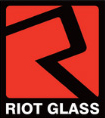Written By: Brad Campbell | April 2, 2025
ASTM test standards play a crucial role in ensuring the safety, durability, and performance of materials and products across numerous industries.
These internationally recognized standards provide manufacturers with clear guidelines for testing and certification, helping them meet regulatory requirements and gain consumer trust.
In the security glazing industry, ASTM testing is especially important for verifying the effectiveness of products like Riot Glass against forced entry and other threats.
ASTM International, formerly known as the American Society for Testing and Materials, is a globally recognized organization that develops and publishes voluntary consensus standards for a wide range of industries.
These standards help ensure the quality, safety, and performance of materials, products, systems, and services across multiple sectors, including construction, manufacturing, transportation, and consumer goods.
With a catalog of over 12,000 test standards, ASTM plays a crucial role in defining the specifications and testing methods used to evaluate materials such as metals, plastics, textiles, and coatings. These tests assess properties like durability, strength, resistance to environmental factors, and overall reliability.
Achieving ASTM certification signifies that a material or product has undergone rigorous testing and meets the industry’s highest standards. This not only ensures compliance with regulatory requirements but also provides manufacturers with a competitive advantage, as ASTM-compliant products are recognized and trusted globally.

Passing an ASTM test standard requires rigorous evaluation to ensure a material or product meets the necessary performance criteria. The process typically involves several key steps:
Each ASTM standard outlines specific testing protocols, performance benchmarks, and acceptable tolerances for a given material or product. Manufacturers must first determine which standard applies to their product and understand the testing requirements.
ASTM standards are tested in accredited laboratories using controlled conditions to ensure accurate and repeatable results. Depending on the standard, tests may measure factors such as:
To pass an ASTM test, a material or product must meet the minimum requirements set by the standard. Failing to meet any critical parameter means the product does not receive ASTM certification and may require modifications before retesting.
Passing an ASTM test once is not always enough. Many industries require ongoing testing and quality control to ensure continued compliance. Manufacturers often integrate ASTM standards into their production processes to maintain consistency and reliability.
Achieving ASTM certification demonstrates a commitment to quality, safety, and industry best practices. This not only builds trust with customers but also ensures compliance with regulatory agencies and international trade requirements.
ASTM testing is essential in the security industry. It’s frequently used to test products such as security glazing, including Riot Glass.
There are various ASTM test standards designed to determine how well a material or system can stand up to serious security threats, such as prolonged forced entry attempts carried out by multiple attackers or a post-ballistic-attack forced entry attempt. These tests are used to certify products like Riot Glass for use in high-risk facilities, from government buildings to schools.
Below we’ll go over two of the most important ASTM tests that Riot Glass has passed:
The ASTM F3561 standard tests the forced entry resistance of fenestration systems (i.e., windows and doors) after a simulated active shooter attack.
This testing method simulates what would be likely to happen in a real-life active threat scenario — an attacker shooting at a building’s windows or doors to weaken them and attempt to force entry.
It’s important to note that this is not a ballistic resistance test, but rather a test to determine whether or not a ballistic attack followed by an attempt to break through the glass could allow an attacker to create an opening large enough to pass an arm through.
In an active threat scenario, if an attacker can pass an arm through a compromised pane of glass, they can often open a door from the inside by using its emergency egress mechanism or by manipulating its lock.
Passing the ASTM F3561 test standards means that the glazing material does not give way even after being penetrated by bullets and impacted by blunt objects or tools. In other words, it remains a barrier to forced entry, providing potentially life-saving access denial during an active threat scenario.
The ASTM F3038 standard is another important forced entry testing standard that simulates a prolonged attack carried out by a group of assailants — six, to be precise.
This is a timed forced entry test designed to determine if a system can withstand a forced entry attempt carried out by an angry mob of rioters using readily available implements, such as sledgehammers, bats, crowbars, and other hand tools.
If the group of attackers cannot force entry through the material within the specified time frame, it passes the test and is certified for use in high-risk facilities.
Systems and products that pass this test are particularly beneficial for government buildings, as they are high-profile targets during civil unrest and rioting. In fact, ASTM F3038 testing is the equivalent of the US State Department’s own forced entry testing standard.

ASTM test standards serve as a benchmark for quality and reliability, giving manufacturers and consumers confidence in the performance of certified products.
In the security industry, passing rigorous ASTM tests demonstrates a product’s ability to withstand real-world threats, from forced entry attempts to active shooter scenarios.
By meeting these high standards, Riot Glass continues to provide industry-leading protection for buildings in high-risk environments.
Ready to secure your facility with ASTM-certified security glazing solutions? Contact us today for a consultation!

HOW CAN WE HELP YOU?
